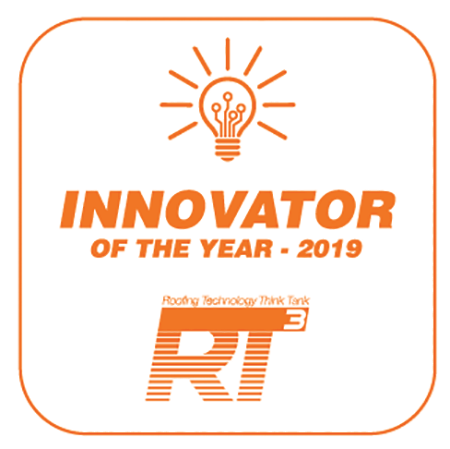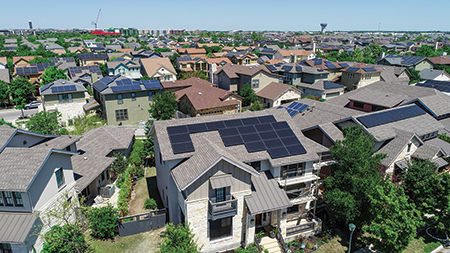Roofing Technology Think Tank seeks award submissions

|
Roofing Technology Think Tank, a group of roofing professionals focused on technology solutions for the roofing industry, is seeking submissions for its first award program to recognize an Innovator of the Year.
The Innovator of the Year award was created to nationally recognize an individual who has contributed to the advancement of the roofing industry through technical innovation and/or product development in one of the following areas: production/technology efficiency; safety innovation; client service/quality of delivery; employee recruitment/training/retention; or environmental impact.
To be eligible, a nominee must be licensed and bonded for a minimum of five years and have a minimum of 10 employees and $5 million in annual revenue. The nominee also must be a member of one or more professional industry associations and be able to cite community enrichment ties through support of nonprofits or company culture programs.
Award judging criteria will be based on innovation, results, design and strategy. The recipient will be announced in September at the Best of Success conference in Miami.
The deadline for submissions is July 30. Additional information and award applications are available at www.rt3thinktank.com/innovator-award. There is a $50 nomination fee to cover processing and award costs.
U.S. surpasses 2 million PV installations

|
On May 9, the Solar Energy Industries Association and Wood Mackenzie Power & Renewables reported there now are more than 2 million photovoltaic installations in the U.S., according to www.cnbc.com. PV installations reached the 2 million mark three years after hitting the 1 million mark; it took the industry 40 years to reach the 1 million mark.
Fifty-one percent of the first million PV installations and 43% of the second million occurred in California. The Solar Energy Industries Association explained the reduction largely resulted from a residential sector that was growing and “rapidly diversifying across state markets.” PV installations in Florida, Maryland, Rhode Island, Texas and Utah also helped drive growth.
Abigail Ross-Hopper, CEO of the Solar Energy Industries Association, says the organization believes “the 2020s will be the decade solar becomes the dominant new form of energy generation.”
Wood Mackenzie Power & Renewables predicts PV installations will reach 3 million in 2021 and 4 million in 2023.
“According to our latest forecasts, by 2024 there will be, on average, one solar installation per minute,” said Michelle Davis, senior solar analyst at Wood Mackenzie Power & Renewables, in a May 9 statement. “That’s up from one installation every 10 minutes in 2010.”
China announces subsidy-free clean energy projects
China has approved its first group of renewable energy projects to be built without financial support from the government, according to Bloomberg Law.
The subsidy-free list encompasses 56 onshore wind farms and 168 photovoltaic solar arrays across 16 provinces totaling 20.8 gigawatts. Solar outweighs wind in the approved projects, with 14.8 gigawatts of capacity compared with 4.5 gigawatts of turbines. The renewable projects only can profit from selling electricity into grids at prices equal to or less than coal power.
New solar projects in China are expected to accelerate during the second half of 2019 because the list of subsidy-free plants now will allow provinces to organize the bidding process required for projects that need government support.
China’s focus on renewable energy stems from its desire to reduce coal reliance and help fight pollution. Although the country has subsidized clean power plants for years, it is moving toward a market-driven approach to help control large subsidy bills. China also announced policies such as setting mandatory consumption targets and giving priority grid access to subsidy-free plants to further encourage clean energy use.
Analysts estimate China will add 37 gigawatts of capacity in 2019.
DOE offers millions for energy-efficient construction technology
The Department of Energy is offering $33.5 million of grant money in new construction technology and advanced building techniques with an aim to reduce energy usage in commercial and residential buildings, according to www.constructiondive.com.
The agency is seeking solutions that will allow energy efficiencies after building retrofits, with goals that include a 75% reduction in major loads from HVAC systems. DOE also wants construction technologies to help new buildings achieve a 50% increase in energy efficiency through techniques such as off-site manufacturing, robotics, digitization, automation and improved building modeling.
Commercial buildings have long been a focus for DOE, which is tasked with addressing energy challenges in the U.S. through science and technology. According to the agency, commercial buildings use 20% of the U.S.’ power.
To maximize energy efficiencies, DOE supports whole building design—an integrated approach to design and construction that leads to various elements of a building working together to save energy. Some construction considerations of whole building design include creating high-performance building envelopes, using landscaping for shading, and using a passive solar approach such as placing certain sizes and types of windows in specific locations.
Features of buildings using passive house design concepts include solar gain optimization; an airtight building envelope; moisture and thermal control via insulation to eliminate thermal bridging; triple-glazed, high-performance windows; and heat-recovery ventilation.
COMMENTS
Be the first to comment. Please log in to leave a comment.